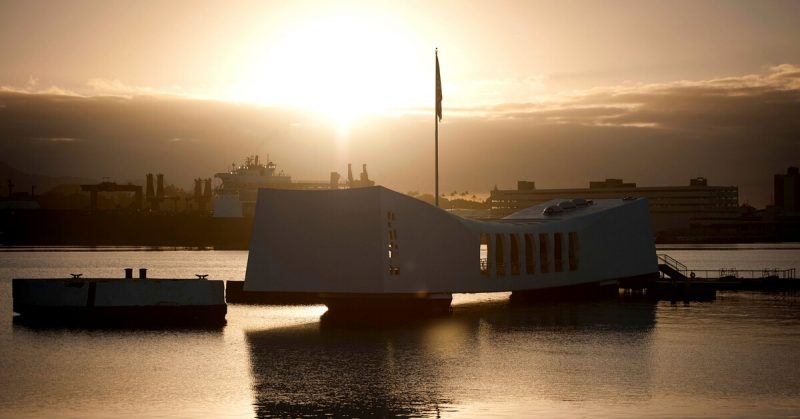The USS Arizona was a Pennsylvania-class battleship which was built for and by the United States Navy in the mid-1910s. She was named in honor of the 48th state’s recent admission into the Union. She was the second and last of the Pennsylvania class of “super-dreadnought” battleships. Even though she was commissioned in 1916, the ship remained stateside during World War I.
Besides a comprehensive modernization in 1929–31, the USS Arizona was regularly used for training exercises between the wars, including the annual Fleet Problems exercises. In 1933, when an earthquake struck Long Beach, California, Arizona’s crew provided aid to the survivors.
In April of 1940, she and the rest of the Pacific Fleet were transferred from California to Pearl Harbor, Hawaii, as a possible deterrent to Japanese imperialism.
During the Japanese attack on Pearl Harbor on the morning of 7 December 1941, as is now well known, the Arizona was bombed. She exploded and sank, killing 1,177 officers and crewmen. The Arizona could not be fully salvaged, unlike many of the other ships sunk or damaged that day, though the US Navy removed parts of the ship for reuse.
The wreck still lies at the bottom of Pearl Harbor and the USS Arizona Memorial, dedicated on 30th May 1962 to all those who died during the attack, straddles the ship’s hull.
These facts are well known today. What is less well known is what sometimes happens after the tours are finished and the regular visitors have departed.
Sometimes, at the end of the day, a profound ceremony will be held, to inter the ashes of a serviceman who survived the initial attacks. Many of these men went on to continue to serve their country in the war and then to lead civilian lives. When they, in turn, approach the end of their lives, they are given the option have their ashes returned to the USS Arizona memorial, and interred there with the other service personnel who died on that day of infamy, 75 years ago.
In this moving video, a member of the team at the memorial takes us through what happens.
